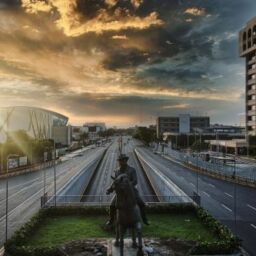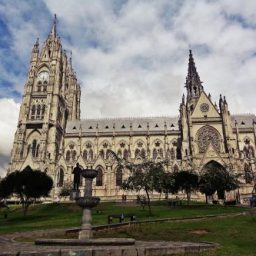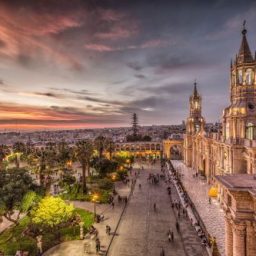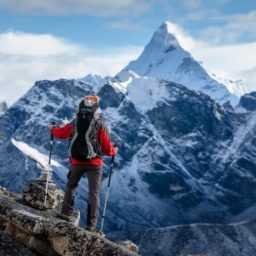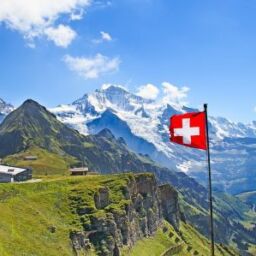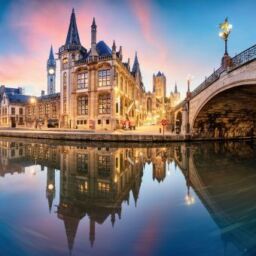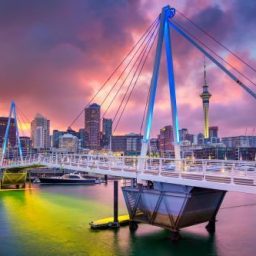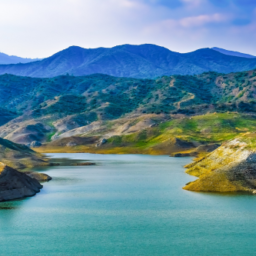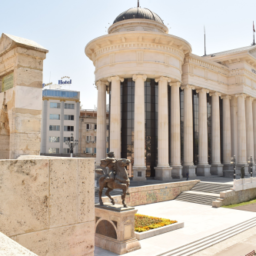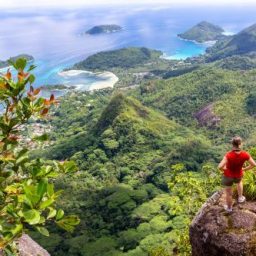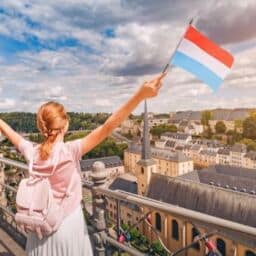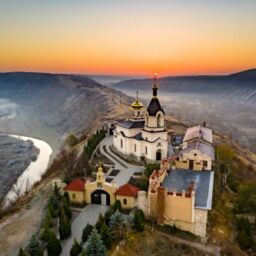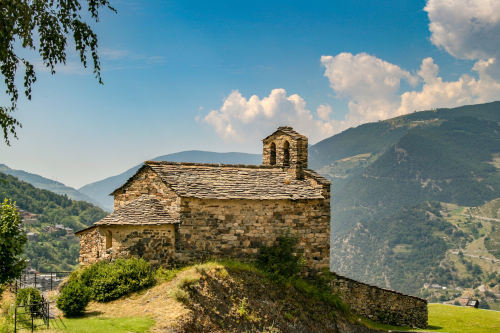

There are some countries so small that you would be hard-pressed to find them on a map. In Europe, we have Monaco, Liechtenstein, San Marino, the Vatican, and Andorra – and the latter is the star of this article. We talk about its language and everything else that you need when visiting this extraordinary and mountainous principality.
What is the history of Andorra, and what languages do the people living there use? What should you remember while staying there? Read on to discover!
Principality of Andorra
This country also uses a more descriptive name, the Valley of Andorra (Les Valls d’Andorra in Catalan). It is a very small country in the Pyrenees, bordered by France to the North and Spain to the South, with no access to the sea.
While the state is a constitutional monarchy, according to tradition each president of France and bishop of the Catalan diocese of Urgel becomes a co-prince. The real power is exercised by the General Council – a 28-member parliament elected by the country’s 85,000 population. The capital of Andorra shares the same name as the country.
Andorra is divided into 7 administrative units known as parishes, from the Catalan parròquia.
A brief history of the country
The beginnings of Andorra date back to that of Charlemagne. The inhabitants of the region supported him in his fight against Muslims. As a reward for the bravery of its citizens, Andorra received city rights. Subsequently, it became a tribute to the counts of Urgell, and then in 1133, the region came under the rule of the bishop of La Seu d’Urgell. Later, as a result of a dispute between the French neighbours and the Spanish bishopric over who should own Andorra, in 1278 an agreement was made that they would co-rule the region.
In 1419, at the request of the people of Andorra, the Territorial Council (Consell de la Terra) was established, also known as the Council of Twenty-Four. Over time, this local parliament was renamed the General Council. In 1607, Henry IV, as Count Foix, issued an edict granting the French ruler rights to co-rule Andorra. Since the 19th century, these rights have belonged to the president of France.
Over the following decades, the region passed through many hands. When the French Empire occupied Catalonia, they divided it into four departments, with Andorra becoming part of the French départament de Sègre. In 1934, Boris Skosyrev, a Russian, decided to proclaim himself an independent prince of Andorra, but was promptly arrested and expelled from the country. During the Spanish Civil War, a French garrison was stationed in Andorra to ensure the safety of the local population. Despite this, Andorra managed to remain neutral during World War II.
While remaining relatively isolated, Andorra was reopened to Europe through the development of tourism and trade, and then in 1993 it thoroughly reformed its political system through the issue of its first constitution. In the same year, Andorra also became a member of the United Nations.
Geography of the Principality of Andorra
Andorra is located in the Pyrenees, covering an area of 468 km² that is solely mountainous. It has a subtropical Mediterranean climate, and the average height of the territory is an impressive 1996 m above sea level. Many of the mountainous slopes are covered by picturesque alpine meadows and forests. The highest mountain is Pic de Coma Pedrosa (2943 m above sea level), while the longest river is the Valira, which eventually connects to a Spanish river, the Segre.
The country’s natural resources include metals like iron, copper, and lead, with a plentiful supply of wood.
The official language of the principality
Andorra’s constitution states that the official language of the state is Catalan, which is a Western Romance language that is also used by the inhabitants of the Spanish autonomous regions of Catalonia, the Balearic Islands and Valencia. It shares many features with Spanish, Italian and French.
Compared to Spanish (the second most spoken language in the world in terms of the number of native speakers), it is a much less known language, spoken by around 11 million people.
A significant influx of immigrants caused by economic development and tourism has resulted in as many as 62% of the inhabitants not originating from Andorra, coming mostly from Spain, France, and Portugal. You are more likely to be understood when speaking Spanish than Catalan, as Spanish is declared by as many as 43% of the residents as their native language, while Catalan only by 35%, although among Catalan speakers, a knowledge of Spanish is also high.
For this reason, we have decided to present the most basic vocabulary in Spanish.
Basic Spanish phrases
Knowing a range of basic Spanish phrases is not just useful in Andorra, but also in many other Spanish-speaking countries around the world. We guarantee that just knowing these words and phrases can make you feel more confident during your trip.
Sí – Yes
No – No
Tal vez – Maybe
Por favor – Please
Gracias – Thank you
Está bien – That’s ok
Muchas gracias – Thanks a lot
Disculpe – Excuse me
Lo sé – I know
No lo sé – I don’t know
Comprendo – I understand
No comprendo – I don’t understand
Perdón – I’m sorry
¿Hablas español? – Do you speak Spanish?
No hablo español – I don’t speak Spanish
¿Podría, por favor, repetir eso? – Could you please repeat that?
Some polite phrases
De nada – Please
No tiene importancia – Don’t mention it
No pasa nada – You’re welcome
Greetings and Goodbyes
Hola – Hello
Buenas – Hi
Buenos días – Good Morning
Buenas tardes – Good Evening
Adiós – Goodbye
Buenas noches – Goodnight
¡Nos vemos! – See you!
¡Hasta luego! – See you later!
¡Qué tengas un buen día! – Have a nice day!
Signs in public places
Entrada – Entrance
Salida – Exit
Salida de emergencia – Emergency exit
Empujar – Push
Tirar – Pull
Aseos – Toilets
Caballeros – Gentlemen
Señoras – Ladies
Libre – Free
Ocupado – Occupied
Fuera de servicio – Out of service
No fumar – No smoking
Privado – Private
No pasar – No entrance
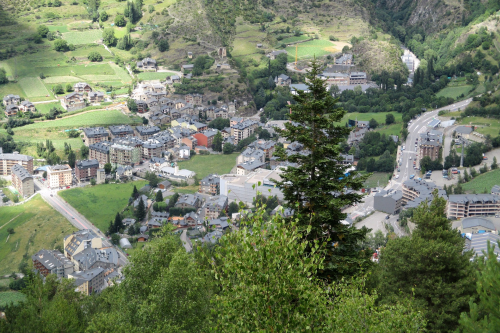

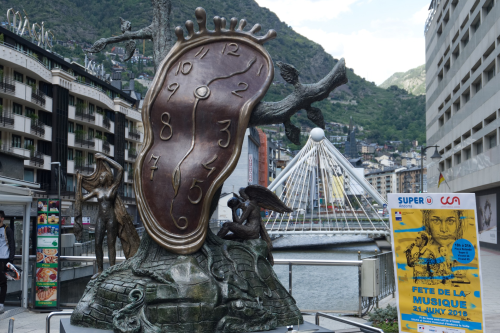
Tourist attractions in Andorra
Andorra is a perfect blend of mountain landscapes, historic architecture, and natural beauty, together forming a well-developed base of modern tourist attractions.
Here are some of our suggestions for must-visit attractions:
- Casa de la Vall and other historic buildings in the capital
- the futuristic Caldea water park
- Roc del Quer
- Grandvalira ski resort
Andorra – useful information for visitors
Now it’s time for some practical advice if you are planning a trip to Andorra.
General entry requirements
There are no visas in Andorra, and citizens of the European Union can enter the country using an identity card or passport. Such documents entitle you to stay in the country for 90 days.
Travellers from other countries need to have the documents required by Spain or France, depending on which country they enter from.
There is a duty-free zone in Andorra, but when importing goods from neighbouring countries you must comply with EU standards. For goods exported from the country, there are limits on the amounts allowed to cross the border. Information on the limits is available in each store and at https://visitandorra.com/en/.
Safety and the political situation in Andorra
Travelling to Andorra should not pose any risk. It is a peaceful country that is safe for tourists. You just need to remember that the nearest national diplomatic representations can be found in France or Spain.
Local time in Andorra
Andorra lies in a single time zone (UTC+1), but a time change is applied between summer (UTC+1) and winter (UTC+2).
Currency
Although Andorra is not a member of the European Union, the currency used in the country is the euro.
Insurance and doctor appointments
The European Health Insurance Card is not recognized in Andorra, so visitors are not entitled to free medical care. You must pay for the invoice issued by the doctor and settle it with the national insurer. A basic visit to the doctor costs about 60 euros.
Prices in Andorra
Andorra has a reputation for being a tax haven. There is no income tax, and most of the government’s revenue comes from tourism. Even the taxes on alcohol, tobacco, and fuels are marginal.
Transportation
There is no airport in Andorra, and the nearest ones can be found in France and Spain: Toulouse-Blagnac, Barcelona-El Prat, and Girona. From there you can reach Andorra by bus or rent a car.
Andorra’s road network measures 380 km, with many routes linked to the networks of neighbouring countries.
There is no rail transport in Andorra.
Driving licence
European and international driving licences are accepted in Andorra. However, you have to drive sensibly, because there are very strict rules and the fees for traffic violations, especially speeding, are high.
Diplomatic representation in Andorra
Most countries do not have any diplomatic representation in Andorra, and the closest embassies can be found in Spain or France.
Visit Andorra with Skrivanek
Knowing Spanish offers a range of possibilities. It not only can be used during travel to Spanish-speaking countries such as Andorra, but also gives you fresh opportunities to establish private and professional relations elsewhere. What should you do if you lack sufficient language skills? You can either take a Spanish language course (in class or remotely) or take advantage of our translation services. As always, Skrivianek has you covered. Our language teachers and translators (for Spanish-English translations as well as Catalan-English translations) are always happy to help. Feel free to contact us!

